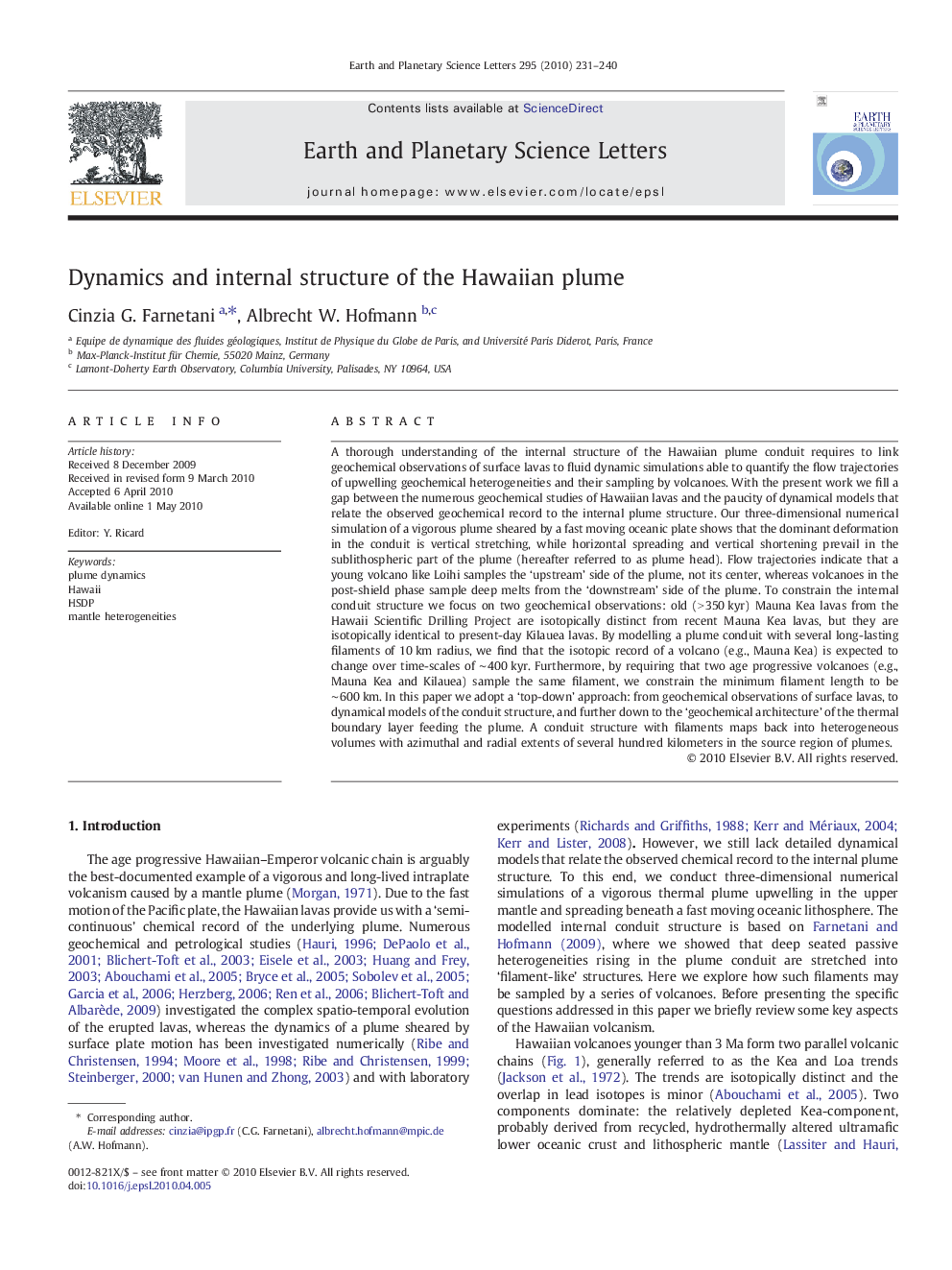| کد مقاله | کد نشریه | سال انتشار | مقاله انگلیسی | نسخه تمام متن |
|---|---|---|---|---|
| 6430947 | 1634850 | 2010 | 10 صفحه PDF | دانلود رایگان |

A thorough understanding of the internal structure of the Hawaiian plume conduit requires to link geochemical observations of surface lavas to fluid dynamic simulations able to quantify the flow trajectories of upwelling geochemical heterogeneities and their sampling by volcanoes. With the present work we fill a gap between the numerous geochemical studies of Hawaiian lavas and the paucity of dynamical models that relate the observed geochemical record to the internal plume structure. Our three-dimensional numerical simulation of a vigorous plume sheared by a fast moving oceanic plate shows that the dominant deformation in the conduit is vertical stretching, while horizontal spreading and vertical shortening prevail in the sublithospheric part of the plume (hereafter referred to as plume head). Flow trajectories indicate that a young volcano like Loihi samples the 'upstream' side of the plume, not its center, whereas volcanoes in the post-shield phase sample deep melts from the 'downstream' side of the plume. To constrain the internal conduit structure we focus on two geochemical observations: old (> 350 kyr) Mauna Kea lavas from the Hawaii Scientific Drilling Project are isotopically distinct from recent Mauna Kea lavas, but they are isotopically identical to present-day Kilauea lavas. By modelling a plume conduit with several long-lasting filaments of 10 km radius, we find that the isotopic record of a volcano (e.g., Mauna Kea) is expected to change over time-scales of â¼Â 400 kyr. Furthermore, by requiring that two age progressive volcanoes (e.g., Mauna Kea and Kilauea) sample the same filament, we constrain the minimum filament length to be â¼Â 600 km. In this paper we adopt a 'top-down' approach: from geochemical observations of surface lavas, to dynamical models of the conduit structure, and further down to the 'geochemical architecture' of the thermal boundary layer feeding the plume. A conduit structure with filaments maps back into heterogeneous volumes with azimuthal and radial extents of several hundred kilometers in the source region of plumes.
Journal: Earth and Planetary Science Letters - Volume 295, Issues 1â2, 15 June 2010, Pages 231-240